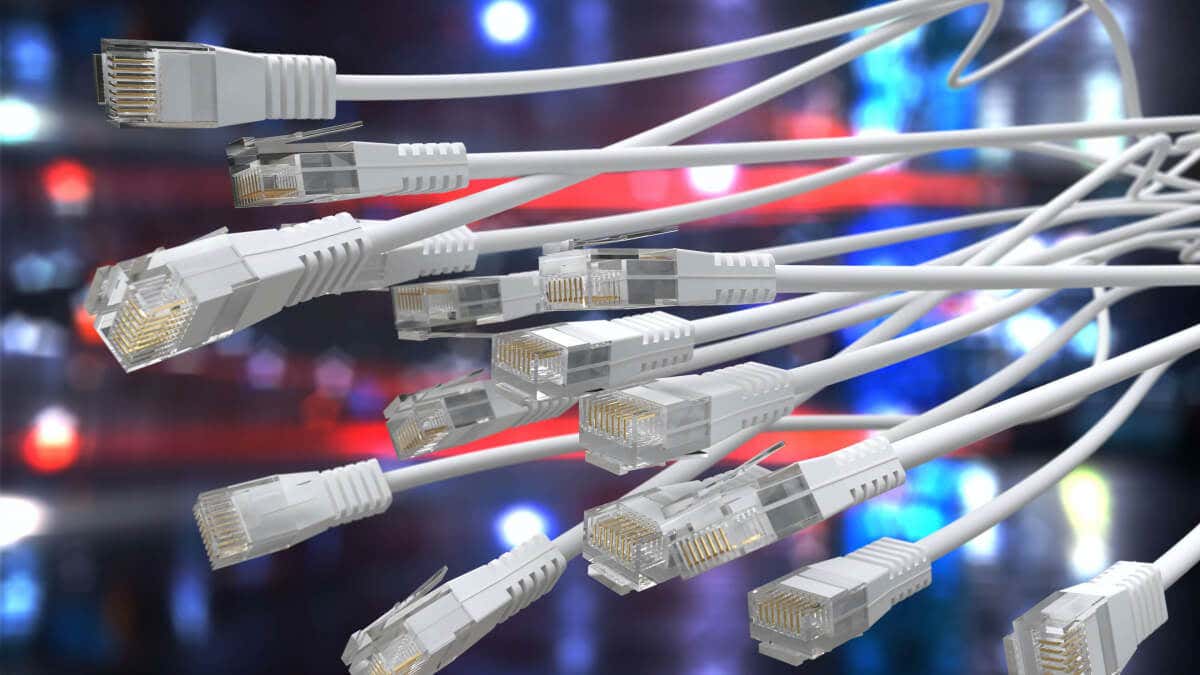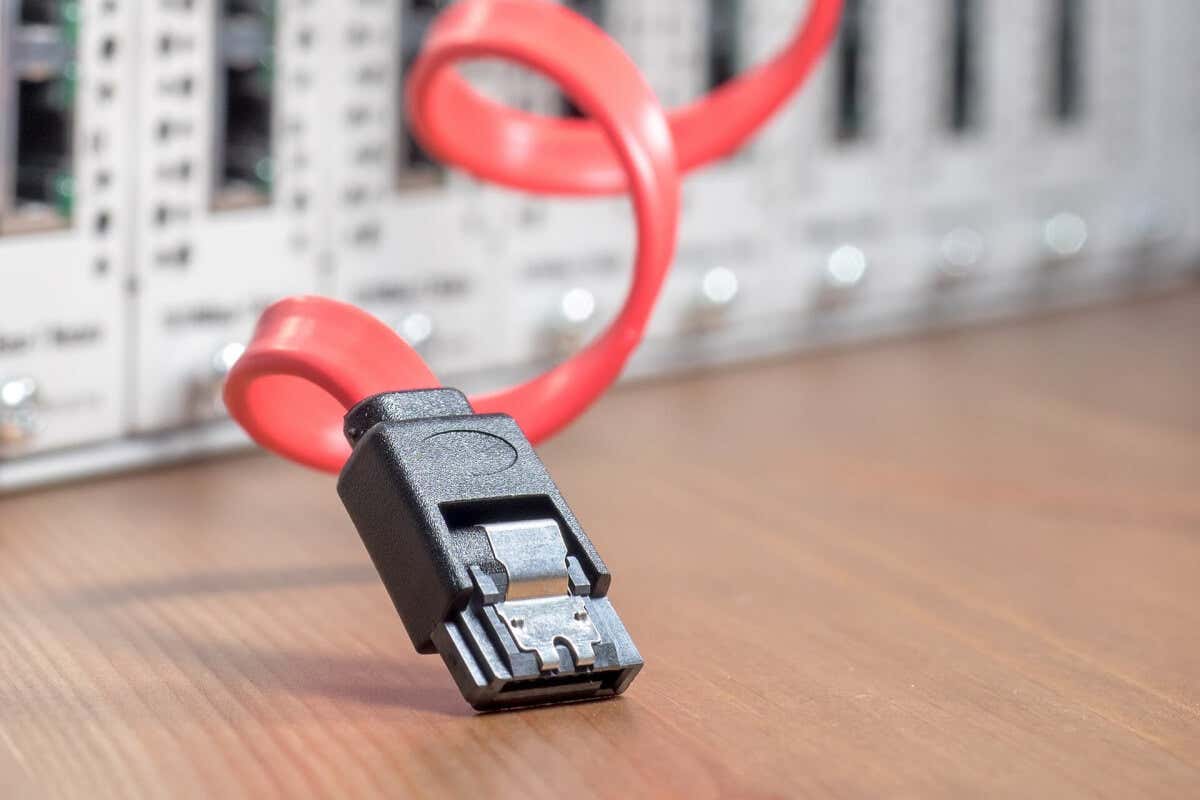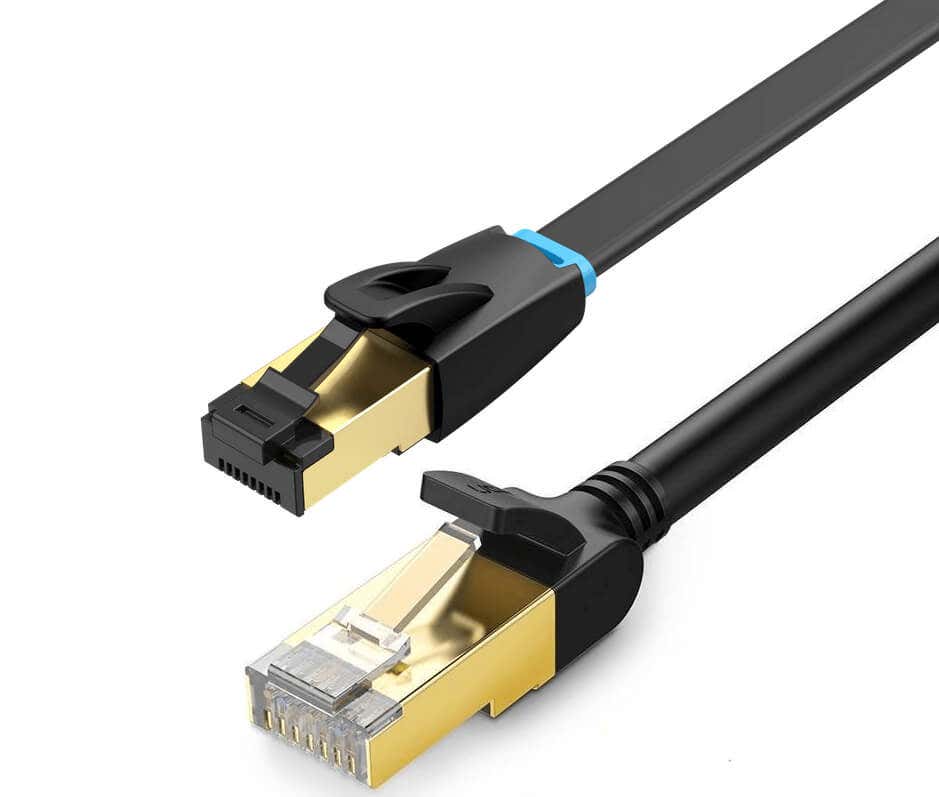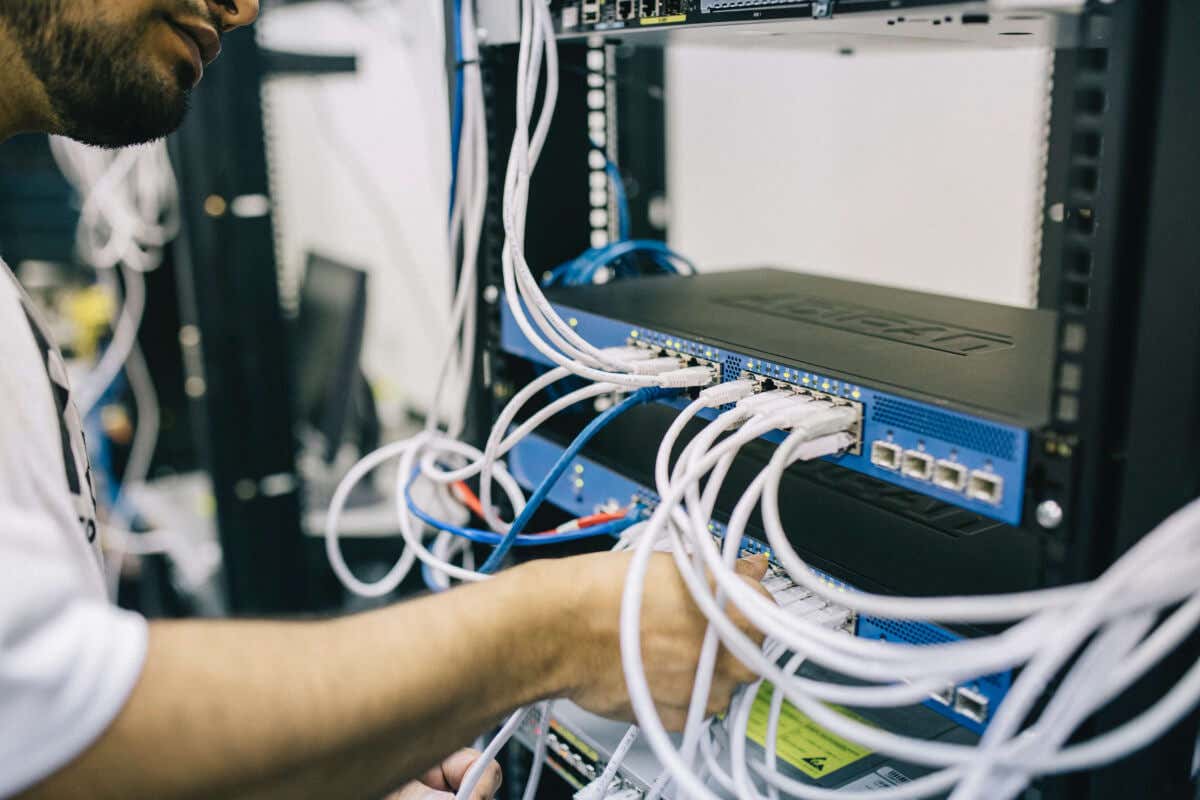When setting up a new network in your home or office, you’ll use internet cables to connect a router or a modem to your PC. These cables are known as Ethernet cables. You’re probably already familiar with various types of Ethernet cables, such as CAT5, CAT6, CAT6a, or CAT7, but you might not know the difference between flat and round Ethernet cables.
These two types of cables differ in their design and the materials they are made of, their insulation properties, and maintenance requirements. Because of all the differences, flat and round cables have different applications when setting up a network. Of course, you want to get the best Ethernet cable, so here’s some insight into which option is better.
What Is a Flat Ethernet Cable?
First designed for IBM computers, flat Ethernet cables, as the name suggests, have a flat shape. They are made of copper wire arranged in twisted pairs rather than in a typical square shape. The flat cables don’t have EMI protection. Because of their shape, placing an EMI shield on them is hard.
The flat Ethernet cables are inexpensive due to the lack of insulation and shielding. They are ideal for compact spaces and are used in robotics, aerospace technology, and premium computer-based systems.
Due to the design, flat cables generate less vibration and noise, which makes them perfect for sensitive technologies. The downside is their lack of shielding makes them susceptible to interference, so they’re not great over long distances. Also, they’re not as resilient as their round counterparts.
That said, here’s a summary of the main characteristics of flat Ethernet cables:
- Flat cables have excellent electrical quality conductivity. This is achieved by placing the conductors side by side. The electrical quality remains constant, which is not easily achieved in round cables.
- Flat Cables are easy to store and install as they have reduced volume and weight.
- Flat Cables are cheaper than round cables.
- Because they don’t have exterior protection and shielding, flat cables need more maintenance due to their structure. They also generate more crosstalk (electromagnetic interference from one cable to another).
What Is a Round Ethernet Cable?
Round Ethernet cables have a round structure and come with full shielding. To stay round, these cables have a filler substance inside them. This filler material also provides the network cable with protection against friction-induced heat and impact from the outside.
These cables are commonly used in data and telecom centers, but we also use them at home and in offices when we need to set up a wired network. For example, they are ideal when a cable needs to pass through a wall or when we need very long cables since their shielding protects them from interference.
Here are the main characteristics of round Ethernet cables:
- Round cables are well-built with proper shielding, and they produce less heat. This makes them perfect for Power over Ethernet (PoE) devices.
- Round cables are flexible, simple to install, and durable. All these qualities make them user-friendly.
- Round cables have higher uptime or level of operation. They last longer than flat Ethernet cables.
- Round cables are much more expensive than flat ones.
Using flat or round cables depends on your requirements.
Differences Between Flat and Round Cables
Here’s what sets apart flat Ethernet cables from round Ethernet cables in more detail.
1. Cable Design
As already mentioned, flat Ethernet cables don’t include a protective filter. That makes them easier to install due to reduced weight and volume. They are pocket-friendly too.
The round Ethernet cables are made of different layers of wire and additional components. The internal heat is reduced by combining the wire with a filler material. Round cables are also more durable and flexible due to being thicker and harder.
2. Insulation
Flat Ethernet cables don’t have insulation or a protective filter. It’s vulnerable to electromagnetic interference, especially when data needs to travel long distances. The longer the cable, the worse the connection becomes due to interference.
Round Ethernet cables have insulation and better EMI protection. The exterior shielding protects the cable over any distance, so you can use them to route connections through an entire building without worrying about interference.
3. Attenuation
Flat Ethernet cables have an increased chance of being negatively affected by electromagnetic interference. As a result, attenuation get’s worse than in shielded cables. This is another reason why flat network cables are not used for long distances.
On the other hand, attenuation is not a big problem for round Ethernet cables, even over very long distances. When data travels through them, the degradation is minimal. Also, the thick insulation provides excellent protection against EMI.
4. Cable Management
Flat Ethernet cables are great if you need to install them along the floor. They can easily be tucked under a carpet. Because they are flat in structure, they easily adapt to different surfaces. They also offer much better cable management options.
Round wires are very convenient if you need to run them through the wall and along the walls. They are a good choice when you’re a pro at cable management, but they can be a hassle if left to lie on the floor freely. Tripping on them is a matter of time.
5. Overall Performance
Flat cables have a constant electrical conductor quality. That means the signal strength will remain the same while you use it. They are great for fitting in limited space, but they are physically weaker and require more maintenance.
Round cables are durable and long-lasting. They are great for heavy-duty data centers. Having several wires inside reduces the internal heat, prolonging their life. However, if you go with round Ethernet cables, ensure they have solid core wiring for easier installation.
6. Flexibility
Both flat and round Ethernet cables can be bent to be installed around certain obstacles. However, they have different bend radiuses, but there’s a maximum amount you can bend the cable before it suffers damage. Bending Ethernet cables can result in slower data transfer, intermittent connection loss, and loss of data transfer capability overall.
Although different cables have different bend radii, the main rule of thumb is that round cables, especially thicker ones, are never to be bent 90 degrees or more. Although flat cables are more flexible and have a greater bend radius, you should be extra careful with them. Because they are unshielded, they are more prone to damage.
Which One Is Better for You?
Overall, flat and round Ethernet cables can significantly differ in appearance, durability, and cost. When choosing the suitable cable for your needs, it’s essential to consider factors like length, space limitations, and frequency of use. Ultimately, the type of cable you should choose depends on how it suits your needs.
Flat cables are highly advantageous for their flexibility and better protection against snags. On the other hand, round cables provide greater durability by resisting kinking and tripping hazards. Beyond considerations related to convenience, the cost is a major factor when deciding between flat and round Ethernet cables, especially if you need large-scale cabling solutions. That said, whichever option you go with won’t affect your data transmission speed or any other networking features in a noticeable way for regular users. They’re both excellent options offering different advantages.




